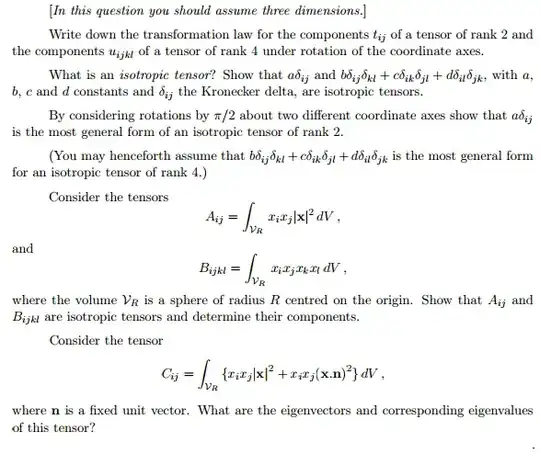I've been given the question:
"Consider the tensor: $$ C_{ij}=\int_{V}{x_ix_j|\mathbf {x}|^2 + x_ix_j(\mathbf {x.n})^2} dV $$ where V is the volume of a sphere radius R centred on the origin. What are the eigenvectors and corresponding eigenvalues of this tensor?"
I assume that the vector n is one of them since it breaks the symmetry, however, I don't know how to show it. Any help would be greatly appreciated as I am completely stuck.
This is actually part of a longer question:

If it is at all useful, the answers I got for the previous part of the question are: $$ A_{ij}=\frac {4\pi R^7}{21}\delta_{ij} $$ and $$ B_{ijkl}= \frac {4\pi R^7}{189}(\delta_{ij}\delta_{kl}+\delta_{ik}\delta_{jl}+\delta_{il}\delta_{jk}) $$